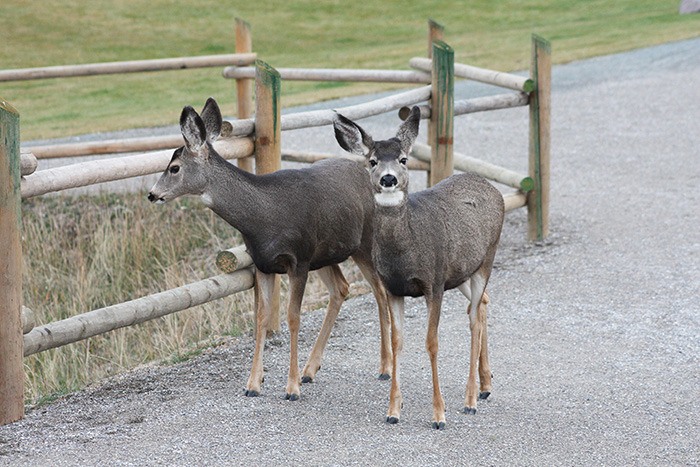The District of Invermere (DOI) is holding three deer counts this November and Irene Teske, a wildlife biologist with the B.C. government who is based in Cranbrook, will be joining two of the three Invermere counts as an observer. The Valley Echo recently caught up with Teske to ask about the counts and the methods used.
Invermere is set to hold three counts in November — why is November the ideal time to conduct a count?
The Ministry recommends November/December because it assists with ensuring a more accurate count for a number of reasons, including the following four: usually by this time there is snow on the ground improving visibility and concentrating urban deer in urban areas and not peripheral forest areas, making the count easier; counting urban deer later in winter (i.e. late December, January or February) may inflate numbers if migratory deer enter towns for the winter; bucks have antlers at this time, and it is easier to classify age and sex of urban deer. Bucks tend to lose their antlers by mid January/February; despite the overall advantages, it should be noted that there may be a slight increase to buck populations due to the ongoing rut in November/December, as some migratory bucks may breed with urban does.
How many counts are needed to get an accurate estimation on population in an area?
We try to conduct three separate counts (one per week) to increase accuracy. Weather can play an important role with being able to see the deer, and three counts allows for at least one good weather day. We use the largest number of deer counted as the minimum number of urban deer within the community, although usually the highest number differs less than 15 per cent from the average.
What are the advantages (and/or disadvantages) of conducting counts by car, as opposed to on foot?
It is very important to reduce the risk of counting the same deer twice, so the survey needs to be conducted quickly and simultaneously. The entire town needs to be surveyed at the same time, therefore the town is divided into survey zones. Volunteers count each zone simultaneously. This requires two volunteers per car (one to drive and the other to observe and record data). Communities are able to conduct these surveys for minimal or no cost. To realize the same results on foot would be logistically very difficult and require many more volunteers.
How accurate are these counts? A deer committee member had mentioned that it’s possible that a count could miss 40 per cent of a resident deer population?
We try to standardize the counting effort as much as possible, but obviously deer could be missed. The observed number of deer counted is therefore considered a minimum count. Nevertheless, the counts provide an index that can be compared annually to establish trends.
“Overpopulation” is a term that seems to be tossed around pretty loosely — is there some sort of formula or methodology used to determine if a geographical area is “overpopulated” by deer?
No, there’s no formula. In an urban environment, society rather than environmental impacts tend to decide if there are too many deer within the community. Each community faces different challenges associated with urban deer conflicts and has different levels of tolerance for these conflicts. The Province believes there isn’t a “one-size-fits-all” solution to urban deer issues because every community has unique circumstances concerning deer-human conflicts and how to resolve them.
Assuming that there is a method for determining overpopulation, how many deer would Invermere need inside their municipal boundaries for you to consider there being an overpopulation?
The Province does not determine when there is an overpopulation; that is a decision for the community to make. The Province is committed to partnering with local governments to facilitate the development of socially acceptable urban deer management solutions. Ministry staff assist communities in managing urban wildlife conflicts in a number of ways, including: participation on community-based planning committees; provision of technical advice; development of hunting regulations and issue permits to manage deer populations within or near urban areas; loaning of available equipment to communities as required.
